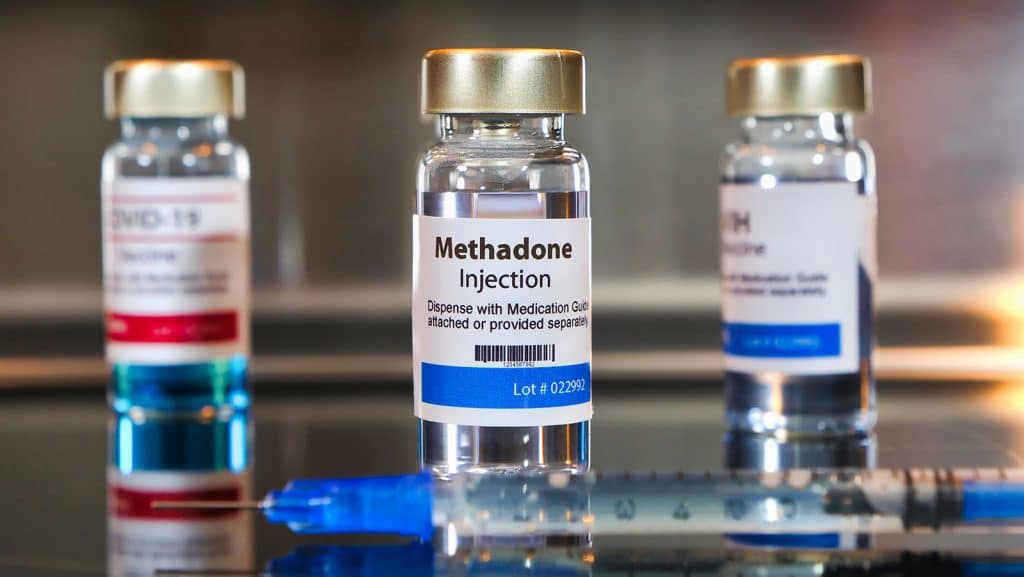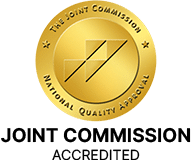Drug addiction can dramatically burden your life in countless ways. Addiction can quickly consume and damage most aspects of your daily life through devastating impacts on your work, social and personal lives, finances, and well-being.
Seeking help for opioid use addiction is an essential first step toward recovery.
An opioid addiction, such as heroin, morphine, or other opiates, is often treated with a prescription for methadone. Unfortunately, some people who have developed an addiction to this powerful treatment drug as one of its side effects. While it can be frustrating to continue struggling with drug addiction after seeking medical treatment initially, rest assured that you can break the cycle and lead the sober lifestyle you want through medically-assisted detoxification (medical detox program) healthcare.
Table of Contents
WHAT IS METHADONE?
Opioid addiction has become more common across the country in recent years. It has been fueled by unlawful drug use and the extensive substance abuse of prescribed drugs. An effective way to medically treat opioid addiction is with methadone, a synthetic agonist. While it is also an opioid, it is used to block the effects of the drug that the individual is addicted to. A physician prescribes the use of methadone as a medication-assisted treatment, and it works by decreasing a person’s intense drug cravings. This treatment plan often includes behavioral therapy and counseling for a comprehensive approach.

Methadone is available in a disk, powder, or liquid format and may be prescribed for in-patient treatment or at-home use. Through dose tapering, the addict may overcome cravings gradually while stepping down from their addiction. However, as an opioid, methadone is a highly addictive substance. Developing a methadone addiction is possible if the drug is not used exactly as prescribed. For example, a methadone addiction could develop if a higher dose than what is prescribed is taken or if the individual combines methadone with the intake of other drugs.
You may have a methadone addiction if you must take methadone to feel normal. You may also be addicted if you have taken increasingly large doses of the drug rather than tapering down. This can lead to severe withdrawal symptoms. Often, an addict will need to increase their dose over time, leading to a growing addiction to methadone.
METHADONE WITHDRAWAL SYMPTOMS
If you or your loved one have previously tried to quit using heroin, morphine, or other opioids, you may recognize similar opioid withdrawal symptoms with methadone. These symptoms can be flu-like and include body aches, an upset stomach, fever, and chills. Some people may notice that their heart rate rises and begin sweating excessively. Other significant withdrawal symptoms associated with methadone withdrawal include insomnia, hallucinations, depression, anxiety, paranoia, and irritability. There are often strong cravings to take another dose of methadone during withdrawal. These withdrawal symptoms develop because the body has become accustomed to functioning with the drug.
METHADONE WITHDRAWAL TIMELINE
If you are addicted to methadone, you may begin to experience withdrawal symptoms a short time after your last dose. The specific timeframe, however, may be based on how severe your addiction is. The severity of the addiction may also affect the withdrawal process. A medically-assisted treatment program often includes roughly four days in a medical facility. During this period of time, the patient will be sedated so that the withdrawal symptoms can be managed. The first step in the process is to complete paperwork and undergo lab tests and a health exam. The patient is then sedated for approximately 24 hours. At this time, medical supervision is required, and treatment will be through an IV to block the opioid receptors in the body. Upon awakening, a non-addictive opioid blocker will be administered through an injection. The patient will be monitored closely by a medical team for another 24 hours, and additional medication may be prescribed to alleviate any additional withdrawal symptoms.
The withdrawal period to clear the methadone from your body is approximately 72 hours. However, it is essential to note that ongoing rehabilitation, such as therapy and counseling, is strongly recommended after detox and may give the patient a higher chance of avoiding a relapse and life-threatening situations.
QUITTING COLD TURKEY VS. METHADONE TAPERING
Opioids, including methadone, are highly addictive, and addictions can develop rapidly. The withdrawal process is riddled with various unpleasant and painful symptoms. This is coupled with intense cravings to continue using the drug. When you quit using methadone alone, you may find that the symptoms and cravings are too significant to overcome.
With methadone tapering, your body can gradually become accustomed to decreasing amounts of the substance. While withdrawal symptoms and cravings are still present, they may be less severe. However, it is essential to note that methadone tapering could take many long months to complete. You may continue to experience cravings and withdrawal symptoms throughout this lengthy period of time.
METHADONE WITHDRAWAL DETOX TREATMENT
While quitting methadone cold turkey and tapering your doses are both options, a better option may be methadone detox through a medically-assisted program. Through opioid blockers prescribed by a physician or medical professional, the body may be free of opioids within 24 hours. You will be sedated during this period, so the withdrawal symptoms will be managed. After this initial phase of medically-assisted detox, a non-addictive medicine will be injected that can block cravings for up to four weeks. This can dramatically reduce the likelihood of a relapse. In addition, with detox treatment, any continuing withdrawal symptoms can be treated by a physician so that you are more comfortable.
In addition to managing the physical aspects of overcoming the addiction, behavioral issues and concerns should also be addressed. After the detox process for methadone treatment has ended, you can benefit from a comprehensive rehabilitation process. This aspect of the treatment process will be tailored to specifically meet your unique needs. This may help you to address the underlying reasons for the addiction and to develop better-coping mechanisms. Altogether, methadone detox treatment may be faster and more comfortable and yield a greater chance of success.
MEDICATIONS USED IN METHADONE DETOX
Initially, a patient will be administered a sedative and an opiate reverser through an IV in the treatment center. Once the patient wakes up from sedation, a Vivitrol injection will be administered. This is an FDA-approved medication that is also known as Naltrexone. It works by eliminating cravings for methadone for up to 28 days. This medication is not addictive. Through administering this injection, the patient can avoid the struggles of the remaining detox process, which could last as long as 14 days. If any opiate withdrawal symptoms linger, the patient may receive a transitionary medication to ease the symptoms. The patient at home may use these non-addictive medications after completing the monitored detox process.
LEARN MORE ABOUT METHADONE DETOX TODAY
At Garden State Treatment Center, a detox center for substance use disorder and other opioid dependence, we have helped many people struggling with methadone addiction to achieve the sober lifestyle they want. Detoxing on your own can be a painful process. You can avoid acute withdrawal symptoms through medically-assisted treatment and may have a greater chance of getting clean. With the many support group therapies and treatment option services we offer after the detox process has been completed, we will continue to stand by you throughout your journey. Contact us today for a personalized consultation to learn more about the methadone detox process and other addiction treatment programs as the first step in your journey toward sobriety.
FAQ
What should you not take with methadone?



